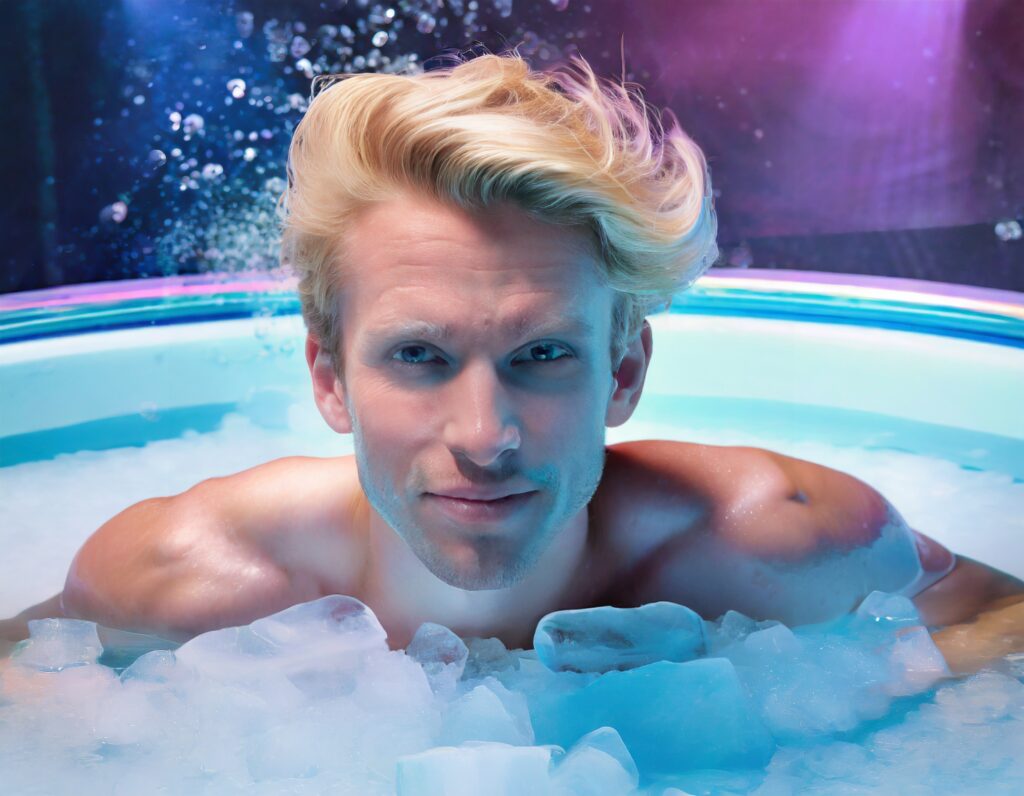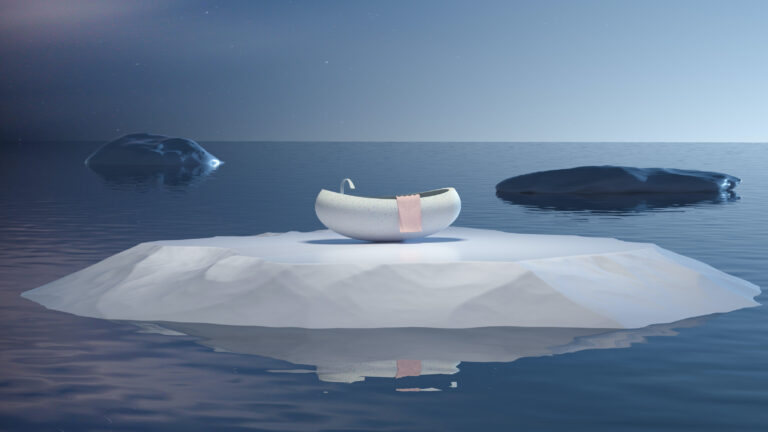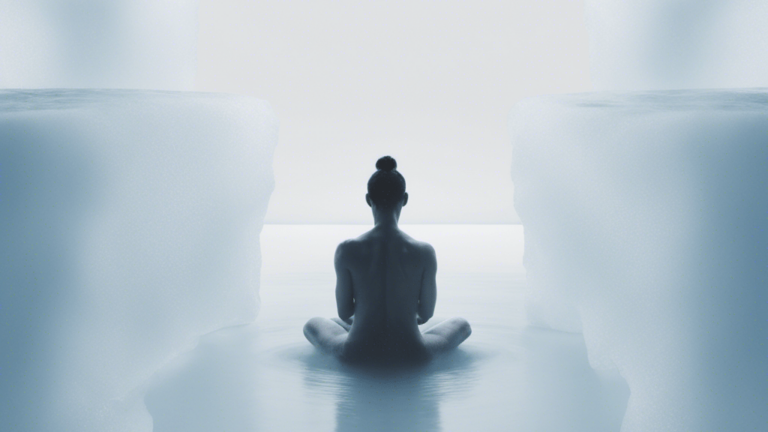Are ice baths really good for you?

Ice Bath Therapy: A Passage to Health and Wellness
The concept of Ice Baths
Ice baths are a specific type of bath in which you sit in icy cold water. The cold water below 15°C (59°F) reaches your neck, and you stay in the bath for 10 to 20 minutes. Ice bath practice is very popular among athletes, and they use it to boost their recovery after physical activity sessions.
While athletes and health enthusiasts have been using ice baths for years, they are now becoming popular among people from all walks of life. Over the years, more and more people have incorporated ice baths into their wellness routine. Those who practice ice baths, talk about the benefits of ice baths on health and wellness, which contributed to their popularity.
The Popularity and Debate Over Ice Bath Benefits
In recent times, ice baths have gained plenty of recognition for their remarkable health benefits. People who use ice baths can’t help but share their overwhelming experiences. Athletes, health enthusiasts, and celebrities share their pictures while taking ice baths, endorsing this practice.
Nowadays, it’s hard to scroll through social media without seeing someone talking about ice baths. However, like any other wellness practice, ice baths are not free from controversy. Critics argue about the science behind the benefits of ice baths and the potential risks of exposure to extreme cold.
So, in this article, we will evaluate the science of how ice baths work and their scientifically proven health benefits. Besides the benefits, we will also discuss the downsides of using ice baths to provide a clear picture.

Uncovering the Science Behind Ice Baths
Understanding the science behind ice baths will explain the basis of their health benefits. It involves several factors, including the body’s initial response to cold and the effects of cold on the muscular and nervous systems.
The Body’s Response to Cold Exposure
Ice baths, a form of cold water therapy, are built on the concept of thermogenesis. Thermogenesis is the creation of heat in the body to maintain an optimal body temperature. When you expose yourself to icy cold water, your body initiates several processes to deal with the cold and maintain its temperature.
Initiating Vasoconstriction and Vasodilation
When the cold water of ice baths touches your skin, it triggers vasoconstriction. In vasoconstriction, the blood vessels constrict, reducing the blood supply to the extremities. Your body retains most of the blood in the core to maintain the core’s temperature.
After you leave the ice bath and your body starts to warm up, there is an increase in blood supply to the extremities. This state is called vasodilation, which increases blood supply to the tissues. Increased blood supply provides nutrients and oxygen for tissue recovery. Studies show that you also experience vasodilation in the ice bath after 5 to 10 minutes of vasoconstriction.
This alteration between vasoconstriction and vasodilation promotes circulatory health and is a fundamental aspect of ice bath advantages.
Effects on the Circulatory System
When you take ice baths regularly, the repeated alteration between vasoconstriction and vasodilation works as an exercise for the blood vessels. Your blood vessels adapt to pressure changes, which result in improved circulation.
Improved circulation in promoting recovery
The vasodilation effect of ice baths improves blood supply to the muscles. Studies show that this improved blood supply flushes out waste, such as lactic acid, from the muscles. The increased blood supply after ice baths also provides necessary nutrients to the muscles, boosting the healing of the muscles.
The Response of Muscles to Cold Exposure
The benefits of ice baths for muscle recovery are based on how your muscles respond to cold. When you expose your body to the ice bath, your muscles undergo several physiological changes.
Reducing Metabolic Process
Physical activity increases the metabolic activity of your muscles. When you expose yourself to a cold water bath after physical activity, your body reduces the metabolic activity as a survival mechanism. This reduces stress on the muscles and boosts their recovery as the muscles get time to repair.
Reducing Tissue Breakdown
As the ice bath decreases metabolic activity, it also slows down the enzymatic reactions that lead to inflammation. Reduced metabolic activity and less inflammation prevent tissue breakdown after physical activity. The role of ice baths in preventing tissue breakdown is a key benefit of ice baths for fitness enthusiasts.
Accelerating Recovery
Ice baths promote faster muscle recovery by reducing metabolic activity and tissue breakdown. Thus, by immersing yourself in cold water, you can limit the stress and adverse effects of a physical activity session on your body.
Nervous System Response to Cold Exposure
Your nervous system responds to stress by undergoing several changes. Cold water immersion or ice bath therapy benefits the nervous system by triggering the stress response.
Stress Response from Cold
Exposing yourself to the cold water of an ice bath is like exposing yourself to low-grade stress. Regular exposure to ice baths works as a mental exercise and trains your nervous system to handle stress efficiently. It creates mental resilience, improving your overall functionality and capacity.
Endorphin Release
Besides building mental resilience, stress exposure benefits the nervous system by releasing endorphins. Endorphins are natural hormones in your body that relieve pain, improve mood, and create a sense of well-being. So, along with the gains of ice baths for physical health, you can also enjoy their benefits for mental health and wellbeing.

Scientifically Proven Benefits of Ice Baths
The list of benefits of ice baths is very long if we just believe in people’s testimonials. However, here we will talk about those benefits which are backed by scientific evidence.
Enhanced Recovery and Performance
One of the earliest known and important benefits of ice baths is their ability to enhance recovery and performance. This is why ice baths are extremely popular among athletes. Here is what research evidence says about the effects of ice baths on recovery and performance;
Overview of Research Evidence
Many studies support the idea of enhanced recovery and performance by using ice baths. A Journal of Athletic Performance study shows that cold water immersion significantly reduces muscle soreness and boosts recovery after high-intensity exercises. This study further reveals that cold water immersion also improves muscle power.
Another study by the British Journal of Sports Medicine shows that cold water immersion effectively reduces muscle damage and improves sports performance. A study published in ScienceDirect shows that cold water immersion is effective in managing delayed onset muscle soreness (DOMS). Delayed onset muscle soreness is the muscle pain and stiffness that occurs after intense exercise.
A 2023 study recommends that athletes use cold water immersion after exercise. The study shows that it reduces muscle soreness and improves fatigue recovery.
Testimonials by Athletes
Many famous athletes practice ice baths and share their real-life experiences on the benefits of ice baths. From basketball icon LeBron James to tennis star Andy Murray, many athletes have publicly endorsed the benefits of ice baths for performance and recovery.
Improved Mental Wellbeing
For a very long time, people used to associate ice baths with physical benefits only. However, with advancements in studies, we know that ice baths also contribute to improved mental health and well-being.
Regular exposure to ice baths is similar to training your mind to deal with stress regularly. This practice builds mental resilience and conditions your nervous system to handle stress more efficiently. Besides mental resilience, you also experience enhanced mood after ice baths, thanks to the release of endorphins — feel-good hormones.
Here is what scientific evidence says about the impact of ice baths on mental wellbeing;
Overview of Research Evidence
A 2023 study by the journal Biology shows that exposure to cold water triggers the release of endorphins in the brain. Endorphins are the natural feel-good hormones in your body that elevate your mood and create a sense of well-being.
Another study published in Medical Hypothesis reveals that cold water therapy reduces the symptoms of depression. A 2023 study on mood response to cold water immersion shows that exposure to cold decreases cortisol levels in the body. Cortisol is a stress marker, and low cortisol levels translate to lower stress.
General Health Benefits
Apart from the prominent and most discussed benefits of ice baths, including recovery and mental wellness, there are other general health benefits. Let’s take a look at a few;
Cold Exposure and Body Fat Burn
As discussed above, the initial response to cold exposure is a decreased metabolic rate. However, prolonged exposure increases metabolic rate to generate more heat and energy. A report shows that cold exposure increases metabolic rate and initiates fat burn. The report further says that cold exposure also improves insulin sensitivity, which can be effective for people with type 2 diabetes.
Cold Exposure in Reducing Inflammation
Cold water baths help reduce the impact of heat and pressure on the body, reducing swelling and inflammation. This promotes faster healing and recovery, making it great for athletes and gym enthusiasts. Regular ice baths can also improve resistance to certain diseases by lowering inflammation levels.

Potential Risks of Ice Baths
Like any other wellness practice, ice baths also have potential risks besides their remarkable benefits. However, you can minimize the risks and adverse effects of ice baths by following guidelines and preventive measures.
Here are a few risks of ice baths and how you can avoid them;
Hypothermia
Hypothermia is a dangerous condition where the temperature of your body drops critically low. It occurs when the body starts losing more heat than it produces. Prolonged exposure to icy cold water in ice baths can cause hypothermia. The risk is even higher for people with poor health or low body fat.
How to avoid hypothermia from ice baths?
You can avoid hypothermia or minimize its risk by regulating your time in the ice baths. If you are a beginner, always start with mildly cold water and a shorter duration than average. As your body adapts to the cold, gradually increase the duration and lower the water temperature.
Make sure that you don’t stay in ice baths for longer than 10 to 20 minutes per session. More importantly, consult health experts before starting the ice bath therapy. They will recommend you the temperature and duration of ice baths based on your health status and tolerance level.
Ice Burns
Ice burns occur when your skin stays in contact with ice or extremely cold temperatures for a long time. They are also called frostbite, which is similar to heat burn. The severity of ice burns can vary, from a small red spot on your skin to permanent skin damage. There is a risk of ice burn if the ice stays in contact with your skin in ice baths.
How to avoid ice burns from ice baths?
When taking ice baths, ensure that the ice doesn’t stay in contact with your skin. To prevent direct contact between ice and your skin, wrap the ice in a cloth and place it in the water. Also, monitor your time and the temperature of the water in the ice baths. Limited exposure and temperature management significantly reduce the risk of ice burns.
Cardiovascular Stress
Extreme cold can put stress on your heart. As discussed earlier, when you are exposed to cold water in the ice bath, it triggers vasoconstriction. Narrowing of the blood vessels from vasoconstriction increases the blood pressure and pulse rate. While these changes can benefit a healthy individual by improving circulation, they can cause cardiovascular stress for those already suffering from heart conditions.
How to avoid cardiovascular stress from ice baths?
People with heart conditions should avoid extreme cold temperatures in ice baths. They should always discuss with their doctor before considering ice bath therapy.

Conclusion: Cool Relief or Risky Practice?
Ice baths have built a reputation for being an exceptionally healthy practice for athletes. Even if you are not an athlete, you can enjoy the health benefits of ice baths. Scientific studies prove that ice baths offer numerous benefits for physical and mental health. Regular ice baths reduce muscle damage, improve recovery, boost performance, and create mental resilience.
While discussing the amazing benefits of ice baths, it is also essential to be aware of their potential risks. If not done carefully, ice baths can cause hypothermia, ice burns, and cardiovascular problems. Fortunately, you can prevent the risks of ice baths by following the recommended guidelines.
So, if you are an athlete looking to improve performance, a gym enthusiast seeking quicker recovery, or a health-conscious individual wanting to improve overall well-being, ice baths are worth adding to your routine. But before that, make sure you get accurate information about ice baths and know your body’s strengths and limitations.







